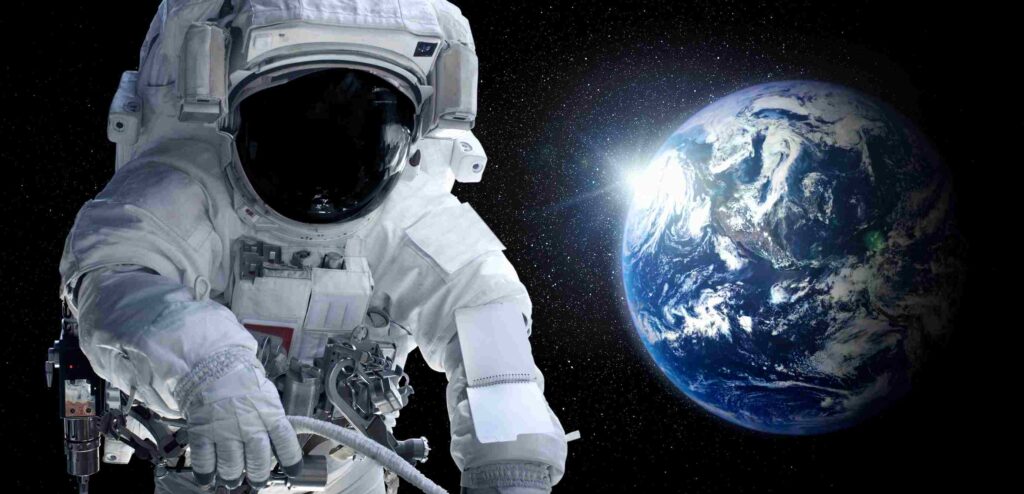What child hasn’t dreamed of becoming an astronaut? The stars, rockets, and mysterious galaxies fascinate young minds everywhere. In Russia and many post-Soviet countries, April 12 is celebrated as Cosmonautics Day — a day to remember humanity’s first journey into outer space.
And here in the U.S.? We celebrate something similar: Space Day, observed on the first Friday of May — this year, it falls on May 2. It’s a great opportunity to talk with kids about the incredible history of space exploration and the brave pioneers (both human and animal!) who helped make it possible.
A History of Cosmonautics Day
The space race began in earnest in 1957, when the Soviet Union launched Sputnik, the first artificial satellite to orbit the Earth. Shortly after, Sputnik-2 carried a dog named Laika into space — the first living creature to orbit our planet. While her mission was historic, it came at a high cost.
More successful (and humane) missions followed. In 1960, dogs Belka and Strelka spent over 25 hours in space aboard Sputnik-5 and returned safely — earning a spot in space history and in the hearts of millions of children.
Meanwhile, the U.S. was not far behind. In 1961, NASA launched Mercury-Atlas 5, with a chimpanzee named Enos onboard. The mission was a success, but it didn’t reach orbit — the spacecraft climbed to about 160 km, just below the threshold of space.

April 12, 1961: The Day the World Held Its Breath
On this day, Yuri Gagarin became the first human to journey into outer space. His spacecraft, Vostok-1, orbited the Earth for 108 minutes, marking a turning point not just for the Soviet Union, but for all of humanity.
Yuri Gagarin was the first person to orbit the Earth and land successfully after exploring. Aboard Vostok 1, Gagarin spent 108 minutes. That is how long the flight took. For his courageous deed and valor, Yuri Alekseevich was awarded the title of Hero of the Soviet Union.
The first "casting" of a person destined to go into space flight was held in 1959. The candidates included 3.5 thousand jet fighter pilots. An important selection criterion was age. Only pilots under the age of 35 could participate in the flight. At the end of the selection process, only 12 out of three and a half thousand candidates remained.
Interestingly, Gagarin didn’t pilot the craft manually. He monitored instruments, communicated with mission control, and — at the end of his journey — ejected from the capsule and parachuted safely back to Earth in Russia’s Sverdlovsk region.
"Vostok-1" was launched from Baikonur Cosmodrome on April 12, 1961 at 06:07 minutes local time.
Yuri Gagarin's famous phrase at the launch, "Let's go!" went viral and became the hero's trademark. Gagarin himself did not control the machine. He only took readings from sensors and sent reports to the team on Earth about his surroundings. For technical reasons, it was impossible to land in the ship. Therefore, Gagarin ejected at an altitude of one and a half kilometers. His landing was in the Sverdlovsk region.
Later, in 2011, the United Nations recognized it globally as a celebration of our shared achievements in space exploration.
April 12 is Astronautics Day around the world!
In 2011, the UN proclaimed the advent of a new space era! April 12 became the International Day of the First Human Flight into Space.


How Russia Celebrates
In 2016, 55 years passed when a man flew into space for the first time. This year in Russia was dedicated specifically to Yuri Alekseevich. And on April 12, a flash mob called "Lift Your Head" took place in the country. For a fraction of a second 108 thousand balloons with Yuri Gagarin's portrait rose into the sky. One thousand for each minute that he spent outside the Earth's atmosphere.
In 2016, to mark the 55th anniversary of Gagarin’s flight, Russians released 108,000 balloons into the sky — one for every minute of his journey beyond the Earth’s atmosphere.
During the COVID-19 pandemic, the Moscow Museum of Cosmonautics held online events and space quizzes to keep the spirit alive — because even a global lockdown can’t ground the dreams of future astronauts.
Space Facts to Share with Your Child
- Gagarin wrote a goodbye letter to his wife before his historic flight, just in case something went wrong.
- During re-entry, the outer shell of his spacecraft caught fire due to friction — perfectly normal physics, but terrifying in the moment. Gagarin reportedly thought he wouldn’t make it.
- The famous footage of Gagarin speaking to his engineer before takeoff? A reenactment filmed after the mission — the real launch was too intense for cameras.
- There’s a memorial on the Moon for fallen space explorers. A small plaque with the names of 14 astronauts and cosmonauts, including Gagarin, was placed there in 1971.
- According to the astronauts, their return after a working flight in space is like a second life. They literally learn to walk again. The muscles atrophy. That's why they need help walking in the first weeks after their return.
- The first person to plunge into the depths of space was Galileo. He was the first to study it with a telescope almost 400 years ago.
- The first living beings to orbit Earth and return safely were two dogs — Belka and Strelka. They spent 25 hours in space in 1960, paving the way for human missions.
At our online Russian school for bilingual children in the U.S. and Canada, we love bringing these kinds of stories into the classroom. Fill out the form below — we’ll be in touch soon!







